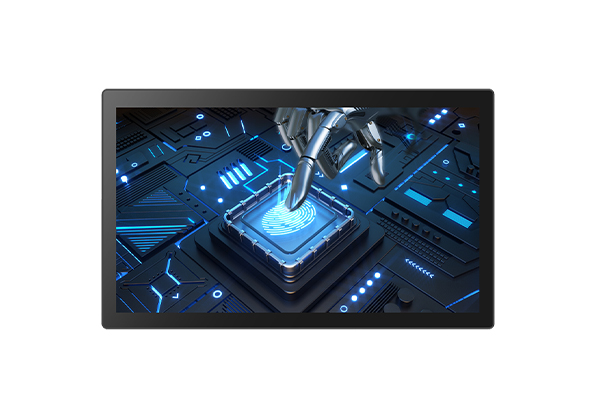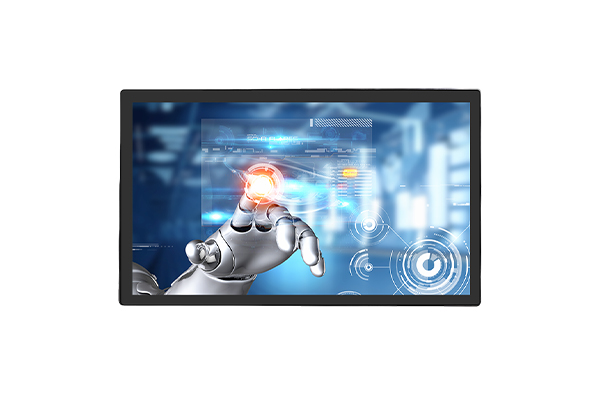How to control the error rate of the facial recognition module of the terminal all-in-one self-service machine?
Release Time : 2025-09-30
To control the false positive rate of the facial recognition module in the terminal all-in-one self-service kiosk, comprehensive measures must be taken across seven dimensions: algorithm optimization, data quality improvement, environmental adaptability adjustments, multimodal fusion verification, dynamic model updates, hardware performance matching, and fault-tolerance mechanism design. This ensures a balance between high security and user experience.
Algorithm optimization is a key approach to reducing false positive rates. The terminal all-in-one should employ advanced architectures such as deep convolutional neural networks. By increasing network depth and adjusting convolution kernel parameters, feature extraction capabilities can be optimized to more accurately capture the unique biometric characteristics of a face. Furthermore, ensemble learning methods should be introduced to combine multiple weak classifiers into a strong classifier, leveraging the complementary nature of different algorithms to enhance recognition robustness. For example, the random forest algorithm can reduce the bias of a single model through a multi-decision tree voting mechanism, thereby reducing the risk of false positives.
Data quality directly impacts model performance. The terminal all-in-one should construct high-quality training datasets covering diverse ethnicities, age groups, lighting conditions, and facial expressions to ensure the model learns comprehensive facial features. Data augmentation techniques such as rotation, scaling, and noise addition can further increase data diversity and improve model generalization. Furthermore, regularly cleaning incorrectly labeled or duplicate data to prevent the model from learning erroneous patterns is also a key step in ensuring data quality.
Environmental adaptability is essential for handling complex scenarios. Terminal all-in-ones must optimize camera parameters based on the lighting intensity, angle, and obstruction of the deployment environment. For example, wide dynamic range cameras can be used to balance bright light with dark details, or infrared fill-in technology can be used to address nighttime recognition issues. Furthermore, environmental mode parameters can be set at the software level to automatically adjust image processing parameters such as contrast and sharpness to ensure that facial image quality meets recognition requirements in different environments.
Multimodal fusion verification can significantly enhance security. Terminal all-in-ones can combine biometrics such as fingerprints and irises with behavioral features for joint verification, forming a "face + X" multi-factor authentication system. For example, in payment scenarios, requiring users to complete both facial recognition and fingerprint verification simultaneously means that even if a face is forged, attackers still need to overcome another biometric defense, significantly reducing the risk of false positives. Furthermore, behavioral features such as gait and keystroke rhythm can also serve as auxiliary verification methods to further enhance the system's anti-counterfeiting capabilities.
Dynamic model updates are key to maintaining recognition accuracy. All-in-one terminals must establish a real-time data feedback mechanism to continuously collect facial samples and false positives in new scenarios, allowing for regular incremental model training. For example, if the system frequently experiences false positives under specific lighting conditions, model parameters can be optimized by supplementing training data from that specific scenario. Furthermore, online learning techniques should be employed to enable the model to quickly adapt to changes in facial features, such as aging and makeup changes, thereby avoiding increases in false positives due to data lag.
Hardware performance is fundamental to ensuring recognition efficiency. All-in-one terminals must utilize high-performance processors and large memory capacities to ensure that the facial recognition algorithm can rapidly complete feature extraction and comparison. For example, using a multi-core CPU or GPU for accelerated computing can shorten recognition response times and avoid repeated user input or system lags caused by processing delays. Furthermore, the use of high-speed solid-state drives can improve data read and write speeds, ensuring smooth model parameter loading and log storage, thereby indirectly reducing the risk of false positives.
Fault-tolerant mechanisms can be designed to compensate for system limitations. Terminal all-in-ones must set a secondary verification threshold. When facial similarity approaches a critical value, it automatically triggers a password entry or manual review process to prevent misidentification due to algorithm fluctuations. For example, in access control scenarios, if the facial matching score is below the security threshold but above the standard threshold, the system may require the user to enter a dynamic verification code or have security personnel confirm their identity. Furthermore, a false positive log analysis system should be established to regularly review false positive cases and optimize model parameters and verification strategies, forming a closed loop of continuous improvement.









